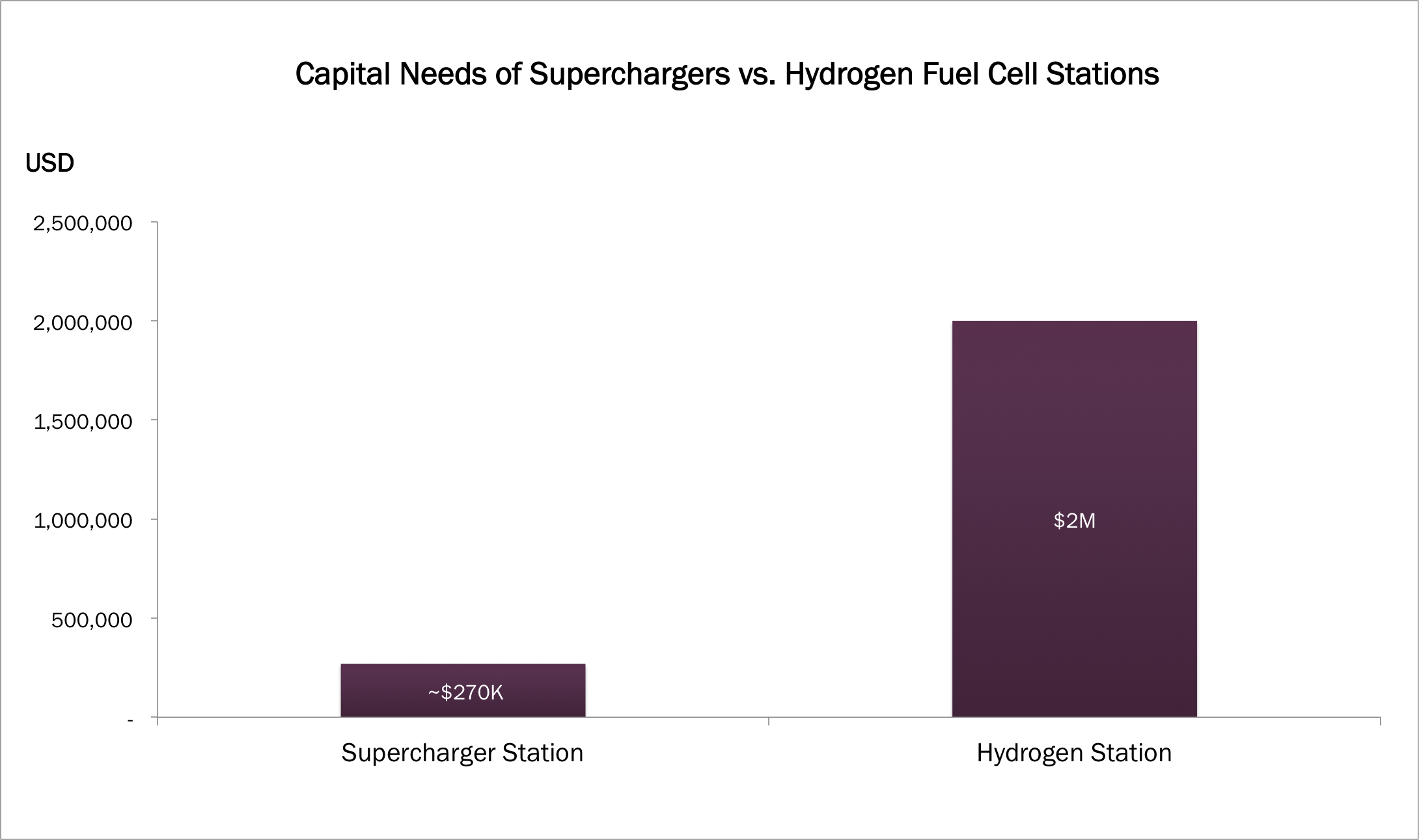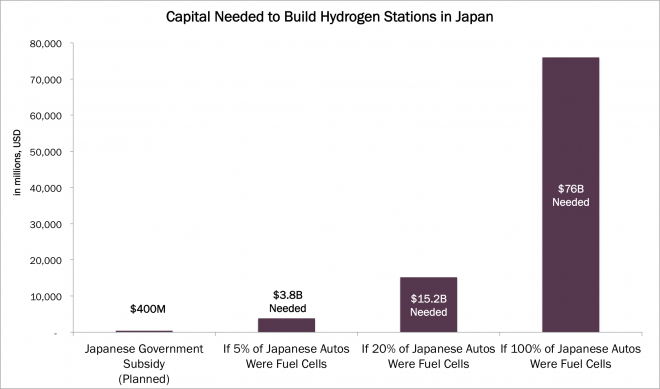
UPDATE July 27, 2015: This post has been updated by ARK Thematic Analysts David Conway and Tasha Keeney from its original form published on September 10, 2014 by ARK Thematic Analyst Intern Andrew Margrave. To request the original blog please email [email protected].
In contrast to electric vehicles (EVs), infrastructure demands will prove to be cost prohibitive for fuel cell vehicle adoption. While any household with an outlet can become a charging station for an EV, hydrogen fuel cell automobiles require new infrastructure, likely funded by government subsidies. As in Japan, which has committed to fuel cell adoption as a matter of public policy, taxpayers will be paying for the hidden costs of the technology.
At first glance, planned Japanese government subsidies may look reasonable, especially to Toyota [TM] and Honda [HMC], who will be spearheading production with the Mirai and FCX Clarity models, respectively. The government plans to offer a $17,000 rebate (¥2 million) for hydrogen fuel cell vehicle purchases, and a $1.7 million subsidy for the construction of each fueling station. Upper-end estimates are that 10,000 vehicles will be sold and 100 fuel stations built in 2015. These stations will cost the Japanese government roughly $350 million in 2015, approximately 0.05% of 2013 Japanese government spending. If the US were to allocate that percentage of government spending to fuel-cell vehicle and infrastructure subsidies, it would spend $1.75 billion. Interestingly, that amount would have covered all of Tesla Motors’ [TSLA] costs in 2013.
However, the $350 million that Japan has budgeted to kick-start the market will be insufficient for fuel-cell vehicles to reach critical mass. A hydrogen fueling station costs roughly $2 million to build, or seven to eight times the cost of a Tesla supercharger, as shown below.

Not only are hydrogen stations more expensive than electric vehicle charging stations, but a denser network is needed to support fuel cell vehicles. Unlike electric vehicles, fuel cell vehicles will not be able to charge at home, and will require an infrastructure similar to gas stations today. There are roughly 38,000 gas stations in Japan,[1] and 60 million passenger cars. If fuel cells were to represent a mere 5% of the Japanese auto installed base, the supporting infrastructure would cost $3.8 billion to build, as shown below.

Fuel cell infrastructure is too expensive to allow for substantial adoption, so far more electric vehicles than fuel cell vehicles will be on the road in 2020. As shown below, the industry is forecasting 1.2 million in cumulative global fuel cell vehicle sales, most of them in Japan, by 2020, paling in comparison to the 20 million unit installed base of EVs.

Toyota [TM] will begin selling its fuel cell vehicle, the Mirai, in 2015 at a price of $57,500. It hopes to sell 3,000 of the vehicles by the end of 2017; however, consumers are unlikely to find the price of hydrogen fuel cell vehicles compelling given its limited range.
The Japanese government could save everyone time and money. It should scrap all fuel cell subsidies, invest in EVs instead, and offer residents 14,000 free 2015 Nissan [NSANY] Leafs.






